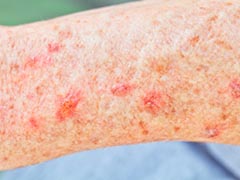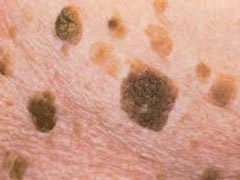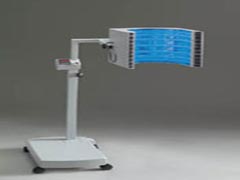


Actinic keratoses (Ak's) are rough, scaly patches on skin caused by excessive sun exposure. They are often called “precancers.” Ak's can develop into dangerous skin cancers if left untreated. Experts estimate that 40% of squamous cell carcinomas begin as Ak's. In fact the difference between an AK and a squamous cell carcinoma is truly a matter of degree / thickness.

Benign skin tumors are noncancerous growths on the body. Benign growths can form anywhere on the skin. Many growths arise as a result of aging or sun damage. Some benign growths arise because of genetic tendencies. If a benign growth is not bothersome, it is usually not a problem.

BOTOX® is approved by the FDA for the treatment of excessive underarm sweating when topical medications do not work well enough. BOTOX® neurotoxin treatment helps control the symptoms of severe underarm sweating by temporarily blocking the chemical signals from the nerves that stimulate the sweat glands.

Photodynamic Therapy (PDT) is an FDA-approved treatment for actinic keratoses. Levulan PDT works best when actinic keratoses are thinner not thicker. Most require 2-4 treatment sessions 4 weeks apart for optimal results. PDT involves both the application of Levulan to the skin and the subsequent activation of this chemical about 1 to 3 hours later via a special blue light.

Skin cancer prevention is most important. However, if you do develop a skin cancer, there are numerous treatments. Every situation and every patient is different. Dr. McCullough will work with you and your family to find the right treatment for you and your lifestyle and your budget.